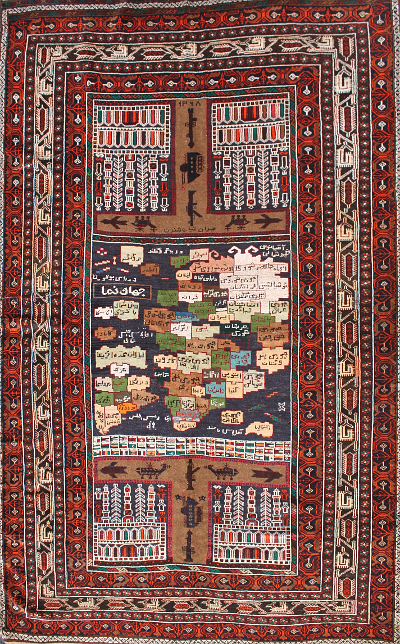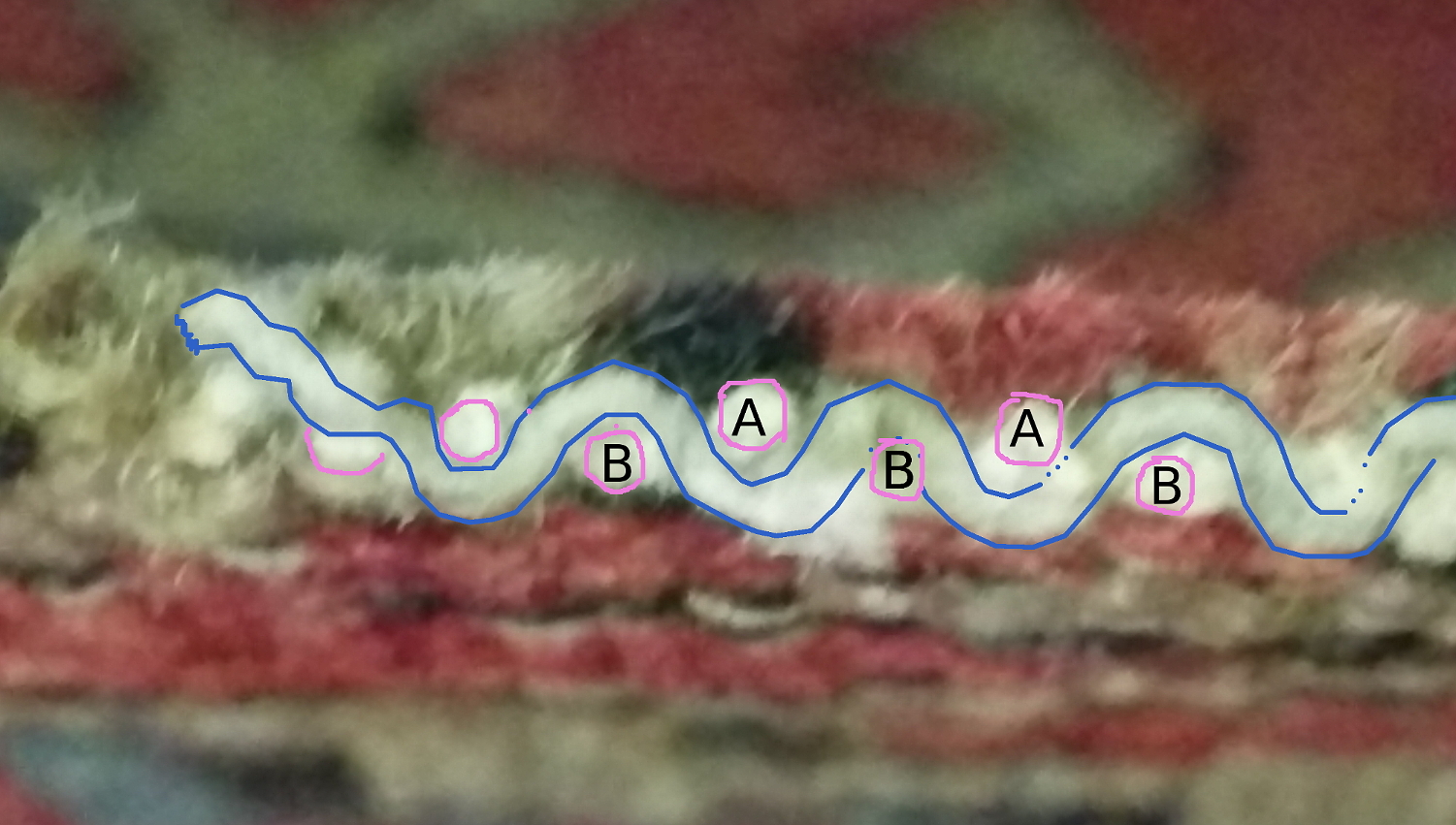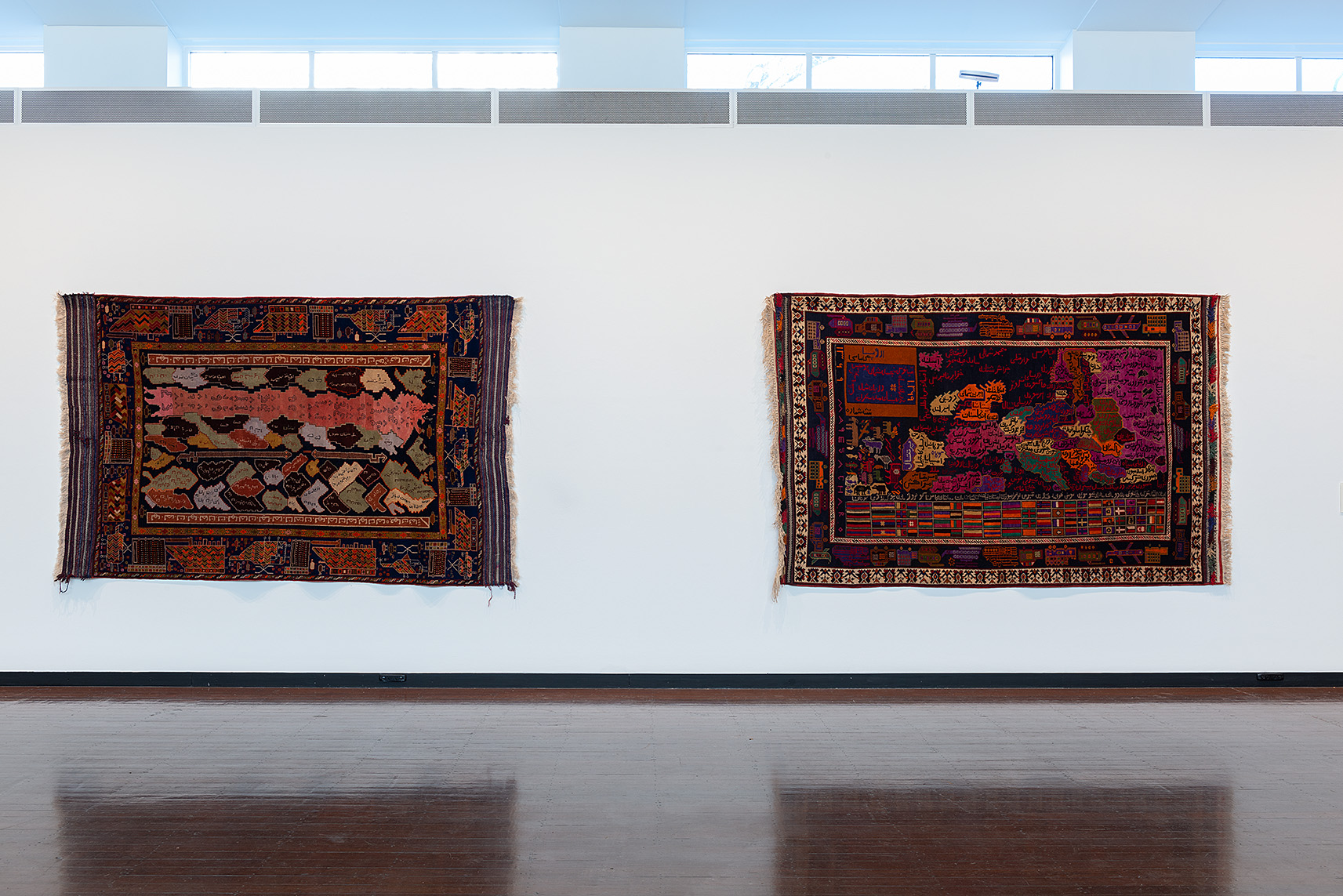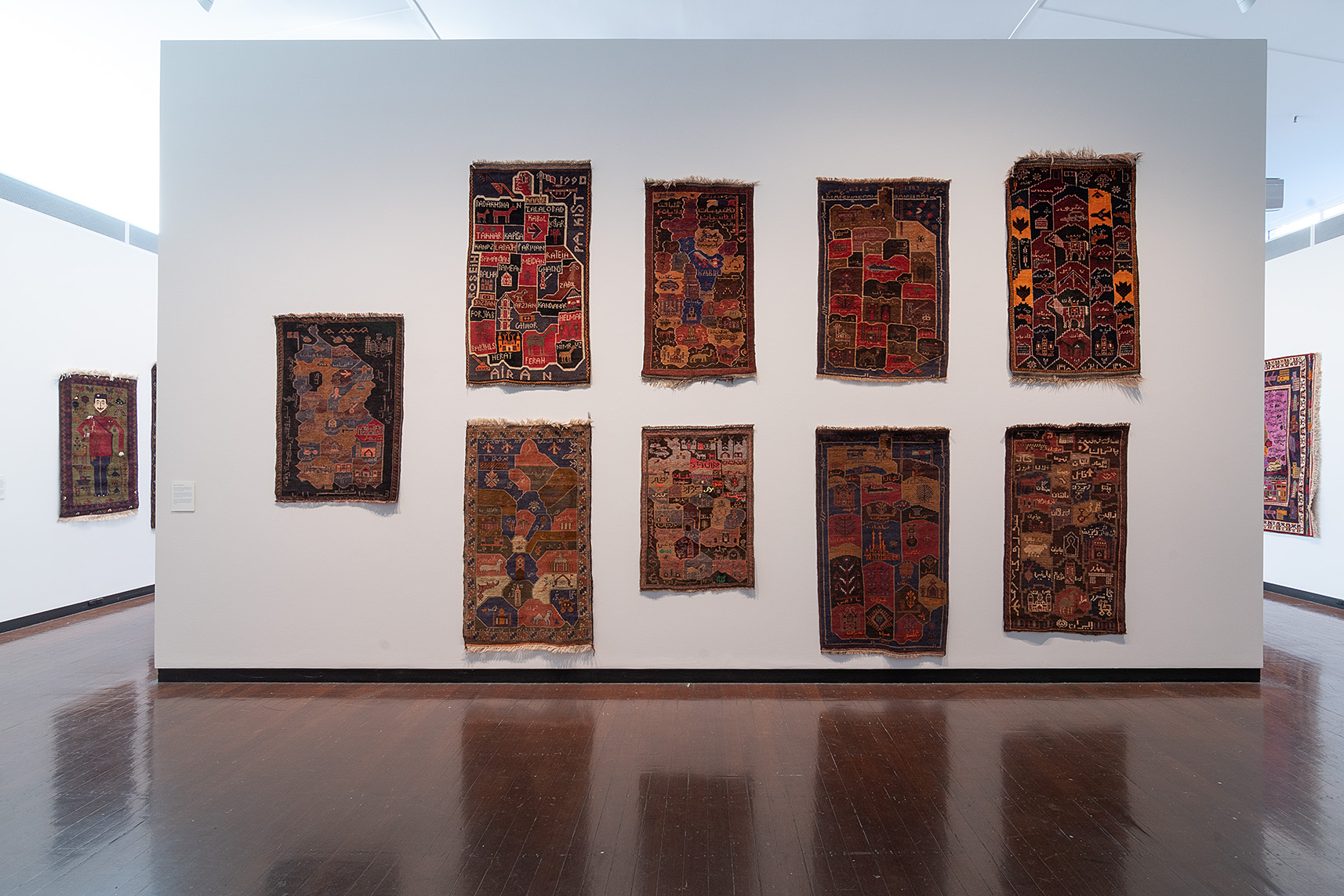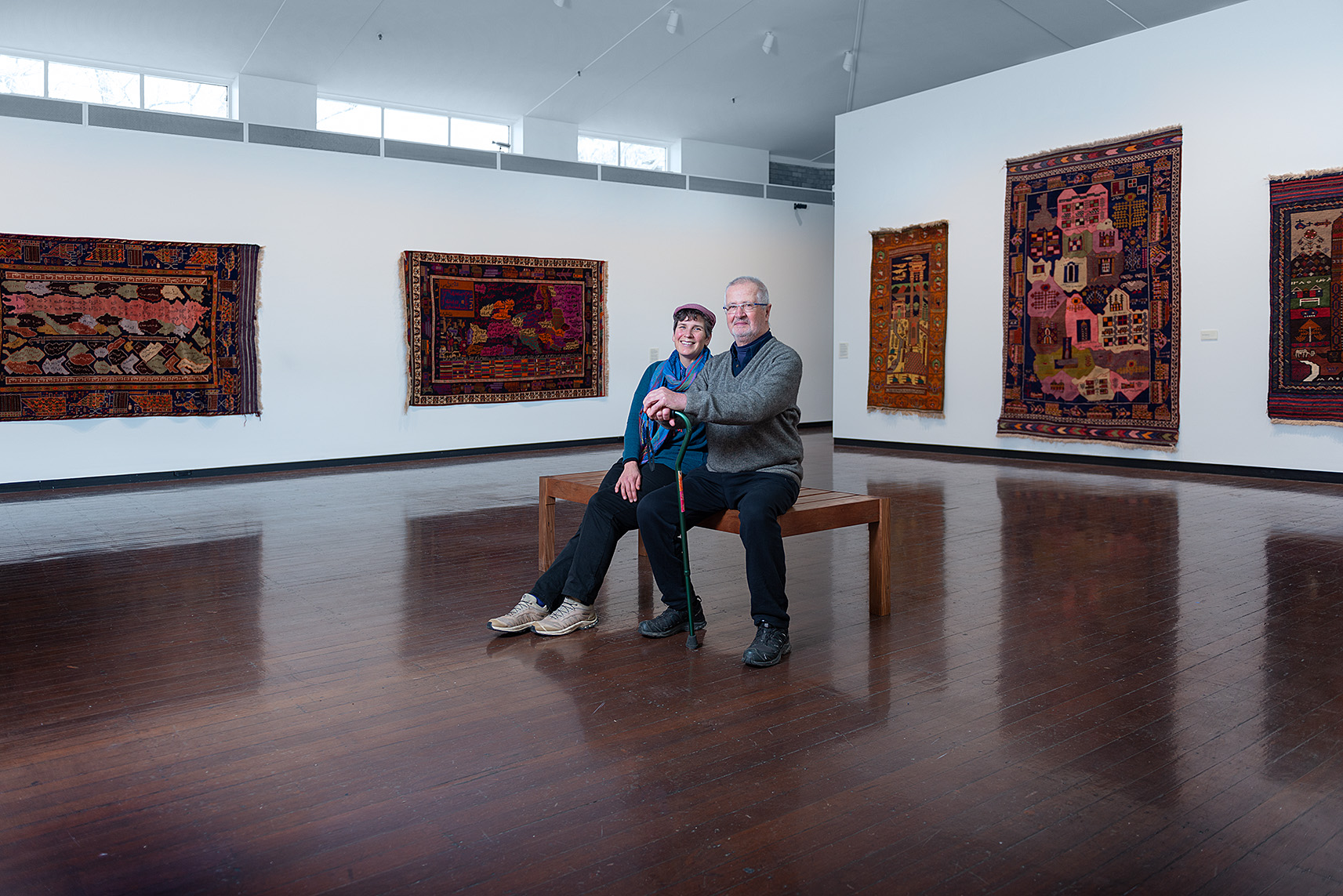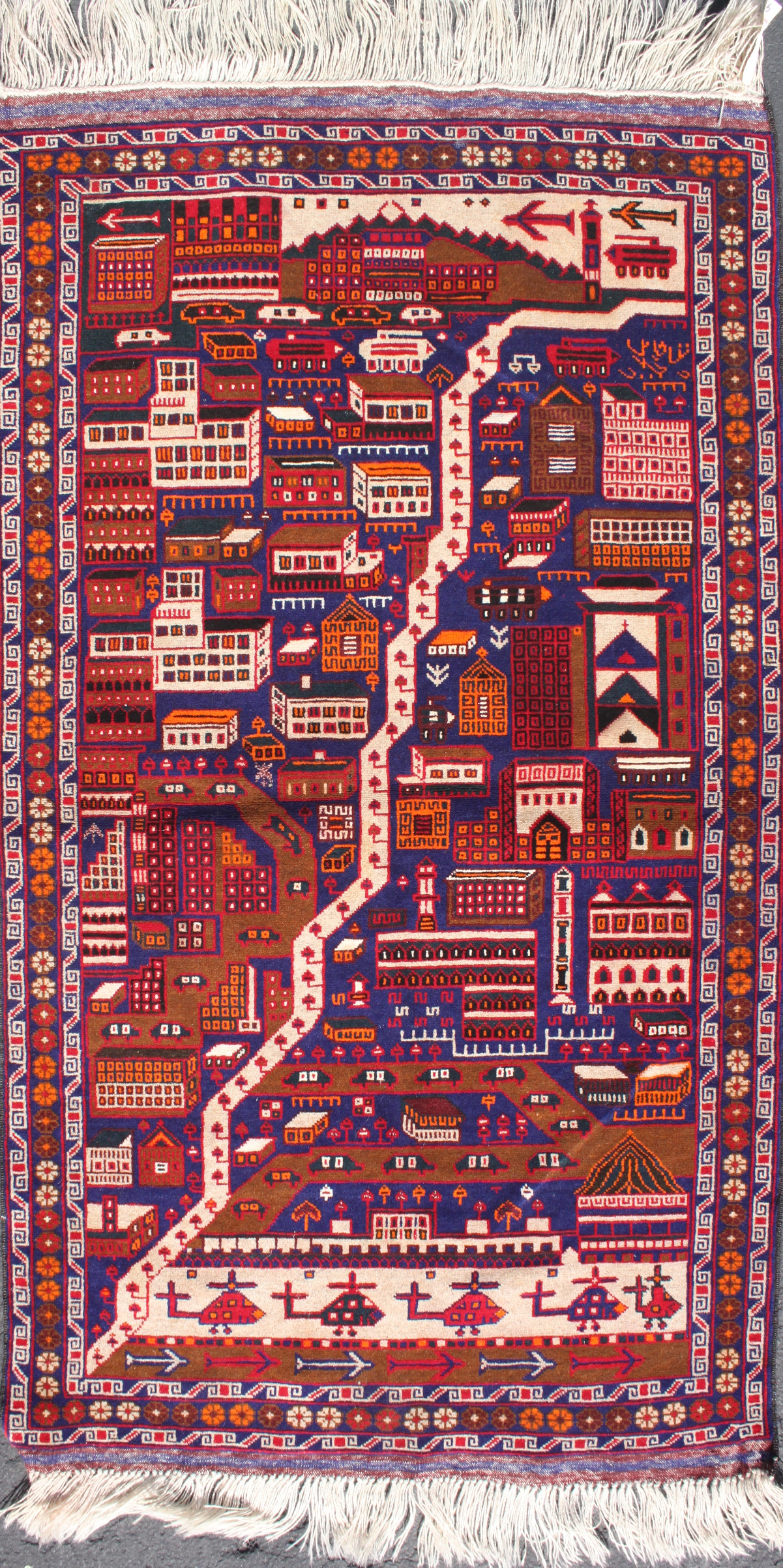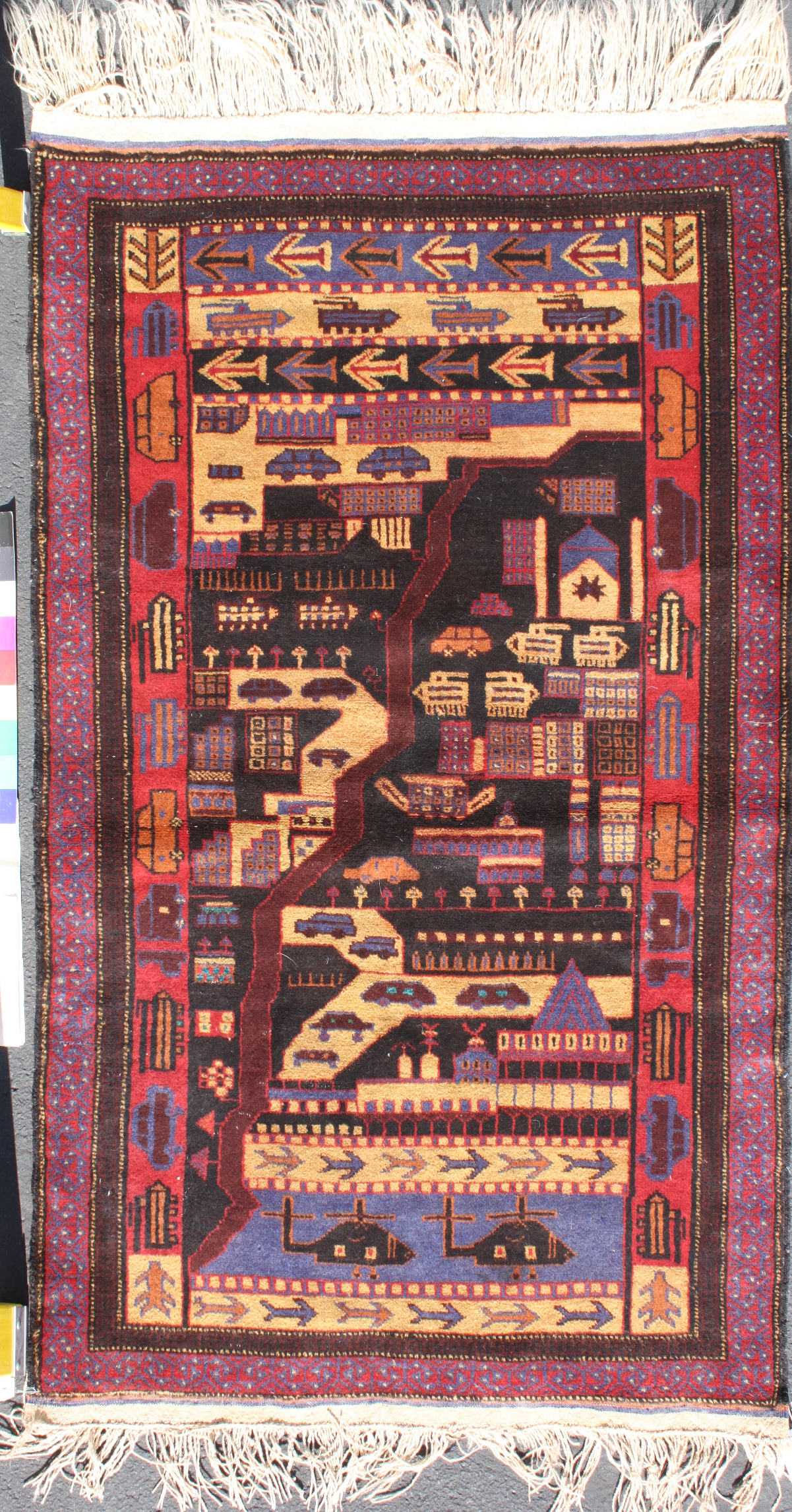University of Pennsylvania professor of Religion, Jamal Elias is an expert on visual language and material culture in the Islamic world. His book “On Wings of Diesel” is beautiful. Professor Elias has written an interesting and challenging story about war rugs which was picked up by by Fast Company , and Newsweek Japan. Professor Elias’s perspective is novel and refreshing.
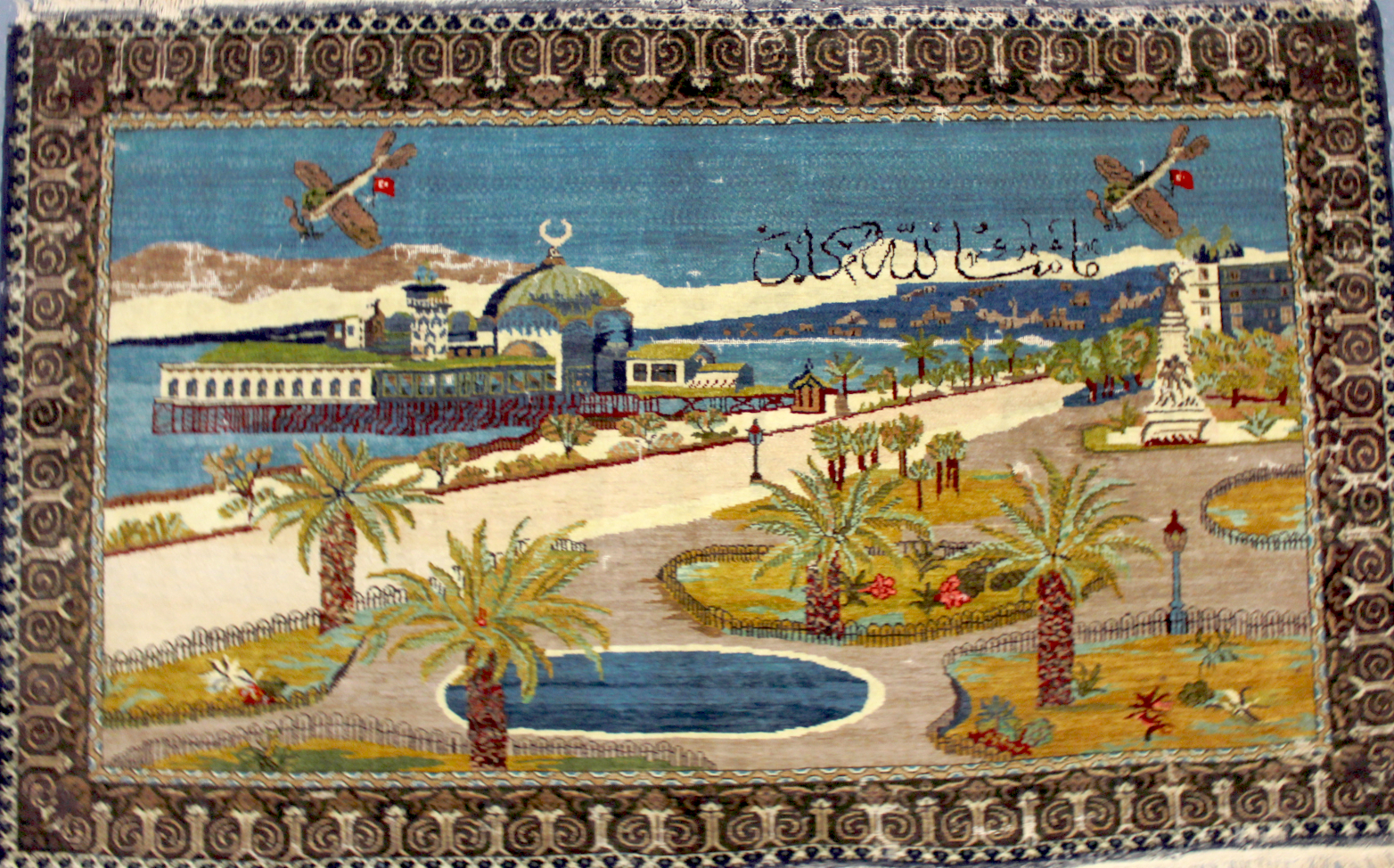
A critique of war rugs presenting new perspective is appreciated, and Elias work on identity gives him a good perspective. His points about market influences are compelling, but a couple of points deserve some push-back.
There is evidence of precursor war rugs predating the Soviet invasion of Afghanistan, for example the Tabriz biplane rug in Canada’s Textile Museum collection (photo unavailable), Soviet propaganda rugs featuring Joseph Stalin, and Turkish rugs showing military aircraft.

I agree the earliest customers seem to have been NGO workers in Pakistan (and people in Boetti’s realm), and Elias characterization of the earliest rugs as ” small and shoddily made with coarse wool” may be true of early AK-47 rugs, but Luca Emilio Brancati’s exhibition in 2018 in Turin demonstrates the special beauty, idiosyncrasy, and quality of early war rugs. Photos of Brancati’s rugs are here. His collection serves as a time capsule, for it was collected exclusively between 1984 and 1987. Brancati’s collection shows the sophistication of both the form and content in even very early war rugs.
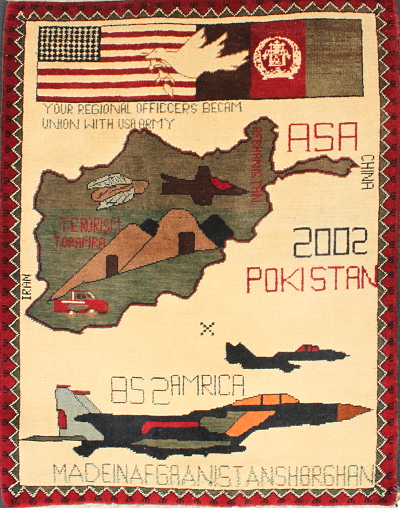
The writing on some rugs declares that they’re made in Sheberghan, a city in northern Afghanistan famous for its Turkmen weavers.
It’s unlikely that they’re all made there. However, whether they’re made in northern Afghanistan or in Afghan settlements in Pakistan, the word “Shebergan,” written in English, is supposed to signal that these rugs are authentically Afghan.
Despite similarities with the Soviet Exodus rugs from Pakistan, reports of Turkmen migration in 2002, the inclusion of US propaganda from Afghanistan, and on the ground accounts of rugs found in northern Afghanistan, I remain convinced that WTC, Tora Bora, and other related designs were woven in Afghanistan.
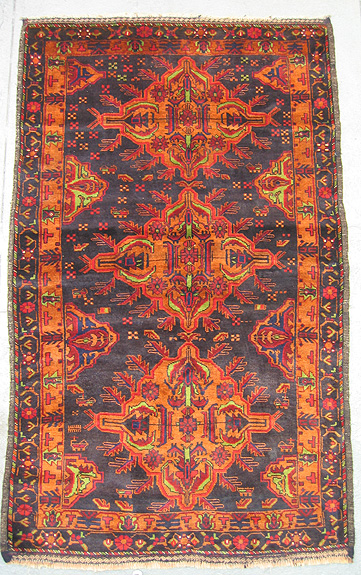
For many years I dealt in regular rugs from Afghanistan, and war rugs from western Afghanistan are consistent, quality wise, with regular rugs from the same areas. Both groups havev rugs which are coarsly woven of poor wool, and gems of lush wool and finely woven ancient designs.
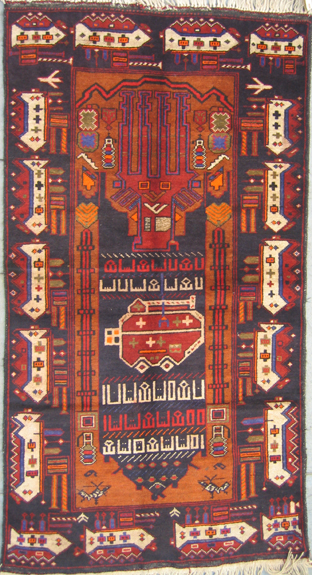
For example here are regular and war rug Latif Khel rugs, and vase of flower rugs, and checkered flower rugs, and two deer rugs where the war rug is much finer than the commercial, regular rug, and vase of flower rugs, and others

Importantly, Elias characterization of the market’s effect is pretty apt. Over the years I have documented the markets influence through a feedback loop. This post documents how a public conversation on Nigel Lendon’s blog lead to a second flush of a design. Since before the 2005 exhibition at the Esso Gallery in New York, < I have been documenting the influence of Alighiero Boetti’s Mappas on pile rugs with world maps. Artsy story about Boetti and war rugs
